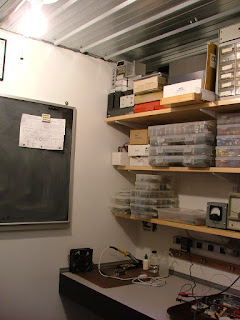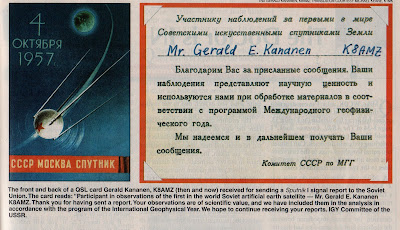Trevor Woods also sent us this report from Arnie Coro. It is not clear to me what difference (if any) there is between the Super Islander Mark IV and the Jaguey Five (described yesterday). But the bit about using parts from old CFL bulbs is interesting. This was something championed by Michael Rainey AA1TJ several years ago. See: https://soldersmoke.blogspot.com/2009/01/soldersmoke-98.html
April 2010:
Today, I will be answering a question sent by listener Bruno from Croatia... Bruno picks up our English language programs via Internet, but he is now also listening on short wave too. He sent a nice e-mail message asking me about the latest version of the Super Islander amateur radio transceiver, because he wants to build one.
Well amigo Bruno, the Super Islander Mark IV is now on the air, and results are very encouraging considering that it is a 40 meters band transceiver built using recycled electronic components.
The Mark IV uses a totally different approach to the receiver design, and it adds two solid state audio filters.
Amazing as this may sound, some of the electronic components used to make the Super Islander Mark IV transceiver came from the circuit boards of broken or damaged Compact Fluorescent Light Bulbs... and that means that there is virtually an endless supply of those parts.
Here is now amigo Bruno, and amigos listening to the program at this moment, a brief description of the Super Islander's Mark IV receiver module.
It starts with a simple resistive signal attenuator that feeds a dual tuned bandpass input filter.
The filter has a limited bandwidth , chosen so as to limit response to out of band signals... The filter is followed by a cascode transistor radio frequency amplifier stage, that feeds a broadband four diodes product detector.
Low level audio from the product detector goes to the audio filtering and amplifying module, made with discrete transistors, of which several of them are also recycled from the Compact Fluorescent Light Bulbs circuit boards...
This version of the Super Islander, the Mark IV , is radically different from any previous ones, as we have now switched over to a totally low cost solid state design , that can be easily reproduced because it uses very common electronic components and straightforward , easy to adjust circuits.
In our upcoming mid week edition I will describe the VFO, or variable frequency oscillator and the transmitter module of this unique low cost amateur radio transceiver, the Super Islander Mark IV... about the lowest possible cost transceiver that will make possible regular two way ham radio contacts on the 40 meters band using either voice or radiotelegraphy modes.


















































